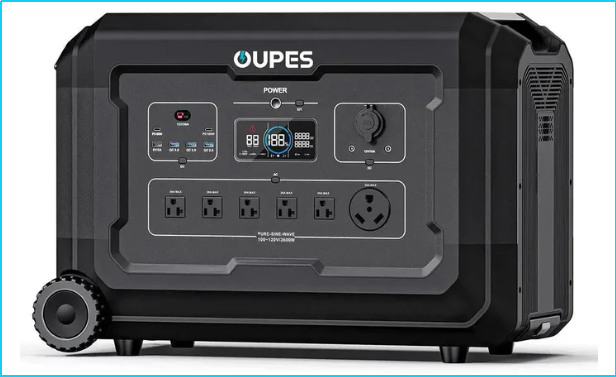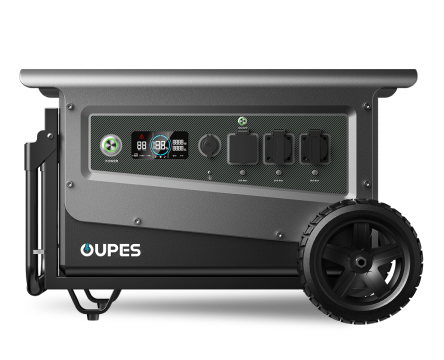
Table of Contents
- Introduction
- Understanding Solar Power Generation Cycles
- Optimal Timing for Appliance Usage
- Appliance Categories and Energy Demand
- Comparison: Scheduled vs. Unscheduled Power Use
- Using Portable Solar Generators for Load Management
- Smart Scheduling and Energy Efficiency Tips
- Battery and System Maintenance
- FAQ
Introduction
Maximizing solar energy generation isn’t just about installing panels or owning a solar generator—it’s about using energy strategically. Scheduling when your appliances run allows you to match power consumption with sunlight availability, minimizing waste and reducing reliance on the grid or backup sources.
According to the U.S. Department of Energy (DOE), intelligent energy scheduling can improve solar power efficiency by up to 20%. This article explores how to schedule appliances for maximum solar generation, how portable power stations fit into the plan, and practical tips for both home and off-grid users.
Understanding Solar Power Generation Cycles
1. The Daily Solar Curve
Solar generation follows a bell-shaped curve throughout the day, with output peaking between 10:00 AM and 2:00 PM. This period, known as solar noon, offers the highest energy potential. Scheduling major energy-consuming tasks during this time ensures you use the cleanest and most efficient power available.
2. Factors That Affect Solar Output
- Weather Conditions: Cloudy days reduce solar intensity by 30–80%.
- Panel Orientation: South-facing panels receive the most consistent exposure in the Northern Hemisphere.
- Battery Storage: Surplus power can be stored in batteries or portable power stations for evening use.
- Seasonal Variation: Shorter daylight hours in winter reduce available generation time.
3. Integrating Solar Generation with Daily Routines
By understanding your solar system’s generation curve, you can plan appliance usage accordingly. Many smart systems automatically track energy production and adjust loads, but even manual scheduling can significantly improve efficiency.
Optimal Timing for Appliance Usage
1. Morning (6:00 AM – 10:00 AM)
At sunrise, solar generation starts low but gradually increases. During this time, use low-power devices such as lighting, coffee makers, or small electronics. Avoid running heavy-duty appliances like washing machines or air conditioners until generation peaks.
2. Midday Peak (10:00 AM – 2:00 PM)
This is the optimal period to run high-energy appliances. Tasks like laundry, dishwashing, water heating, and electric vehicle (EV) charging should be scheduled within this window. If you use a portable power station, this is also the best time to recharge it using solar input, ensuring full battery capacity for evening hours.
3. Afternoon (2:00 PM – 6:00 PM)
Solar output begins to decline after 2 PM. It’s best to complete most energy-intensive tasks before this window. During late afternoon, prioritize efficiency—switch to LED lighting, unplug idle devices, and reduce unnecessary loads.
4. Evening and Night (6:00 PM – 6:00 AM)
When sunlight is unavailable, rely on stored solar energy from your battery or solar generator. Only essential devices like lights, phones, or medical equipment should draw power at night to preserve battery life.
Appliance Categories and Energy Demand
1. High-Energy Appliances
These devices consume significant power and should be scheduled during midday solar peaks. Examples include washing machines, dryers, water heaters, and induction cookers. Running these appliances during off-peak times often drains stored energy quickly.
2. Medium-Energy Appliances
These include microwaves, coffee machines, and entertainment devices. You can use them throughout the day, but avoid running several simultaneously outside of solar peak hours.
3. Low-Energy Appliances
Lighting, routers, and mobile chargers fall into this category. They can safely run off a portable power station at night with minimal battery drain.
Comparison: Scheduled vs. Unscheduled Power Use
| Category | Scheduled Power Use | Unscheduled Power Use |
|---|---|---|
| Energy Efficiency | Optimized for solar availability; minimal waste | Power drawn from battery or grid unnecessarily |
| Battery Longevity | Extended lifespan due to balanced charging cycles | Frequent deep discharges reduce battery life |
| Cost Savings | Lower electricity bills; fewer grid dependencies | Higher bills from inefficient power usage |
| Carbon Footprint | Reduced emissions through optimized solar use | Higher emissions from supplementary power sources |
Using Portable Solar Generators for Load Management
1. Load Balancing and Backup Power
Portable solar generators help maintain consistent energy flow when sunlight fluctuates. They store excess daytime energy and automatically supply it during cloudy periods or at night. This function is vital for off-grid living, RV travel, and emergency preparedness.
2. Energy Diversion Strategies
During peak solar hours, surplus energy can be directed to recharge the portable power station or used for high-demand appliances. Smart charge controllers can handle automatic switching between power sources, ensuring continuous efficiency.
3. Example: OUPES Portable Power Stations
OUPES power stations are designed to work seamlessly with solar panels, offering reliable energy storage for daily scheduling. Their systems include advanced Battery Management Systems (BMS) that prevent overcharging and optimize energy distribution during peak and off-peak hours.
Smart Scheduling and Energy Efficiency Tips
1. Use Smart Plugs or Timers
Smart plugs can automate when appliances start or stop, syncing operation times with solar production peaks. This prevents wasted energy from running devices during low-sunlight periods.
2. Prioritize Essential Loads
When available solar energy is limited, prioritize critical devices such as medical equipment, lighting, and refrigeration. Delay non-essential tasks until solar production increases.
3. Monitor Energy Usage
Many modern solar generators include monitoring apps that track power generation and consumption in real time. Use this data to refine scheduling and balance load usage throughout the day.
4. Combine Solar and Battery Systems
Pairing solar panels with a high-capacity battery or portable power station ensures that no energy goes to waste. During midday peaks, the battery charges; at night, it discharges to power low-load devices.
5. Avoid Phantom Loads
Unplug electronics that consume standby power, such as TVs and chargers. These “phantom loads” can silently drain stored energy overnight.
Battery and System Maintenance
1. Regular Battery Care
Recharge your portable power station regularly, even when not in use. Avoid complete discharges and keep batteries within recommended temperature ranges to prolong lifespan.
2. Solar Panel Cleaning and Positioning
Dust, snow, or shading can reduce solar generation by up to 25%, according to the National Renewable Energy Laboratory (NREL). Clean panels regularly and adjust tilt angles seasonally for optimal exposure.
3. Monitor System Efficiency
Track daily output using an inverter or monitoring system. A consistent drop in performance may indicate wiring issues, shading, or degradation in solar cells.
4. Seasonal Adjustments
In winter, when daylight hours are shorter, adjust your schedule to focus on morning and midday activities. During summer, extend operation times into late afternoon to take advantage of longer sunlight.
FAQ
1. What time of day should I use most of my appliances?
The best time is between 10:00 AM and 2:00 PM, when solar power production is at its peak.
2. Can I run heavy appliances at night?
Yes, if you have stored solar energy in a portable power station or battery system. However, try to minimize high loads after sunset to preserve battery life.
3. How do I know which appliances use the most power?
Check the wattage label on each appliance or use a smart meter to track real-time consumption. Prioritize scheduling for devices above 500W.
4. Do solar generators automatically manage loads?
Some advanced systems feature built-in energy management or app-based controls. Others require manual scheduling but still allow efficient load balancing.
5. Can portable power stations be charged and used simultaneously?
Yes, most models allow pass-through charging—charging while powering appliances. However, verify the manufacturer’s specifications for safety and efficiency.
6. How does smart scheduling help the environment?
By aligning power use with peak solar output, you reduce reliance on fossil fuels, lower grid demand, and extend battery life—all contributing to a smaller carbon footprint.




























